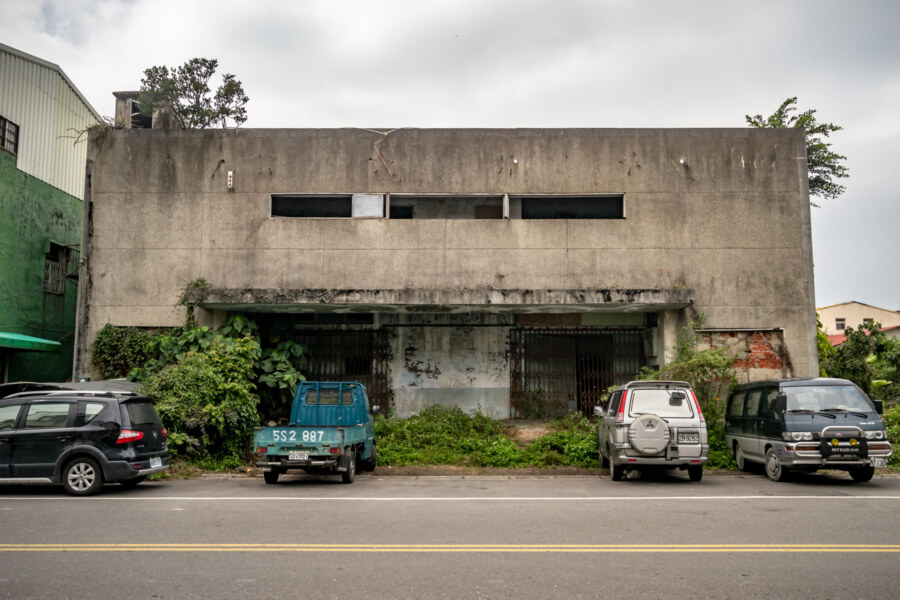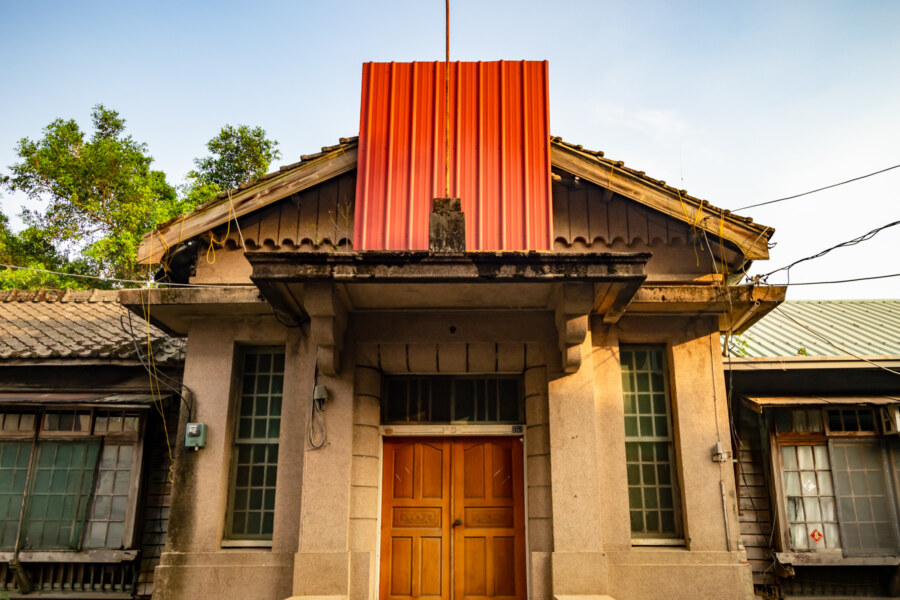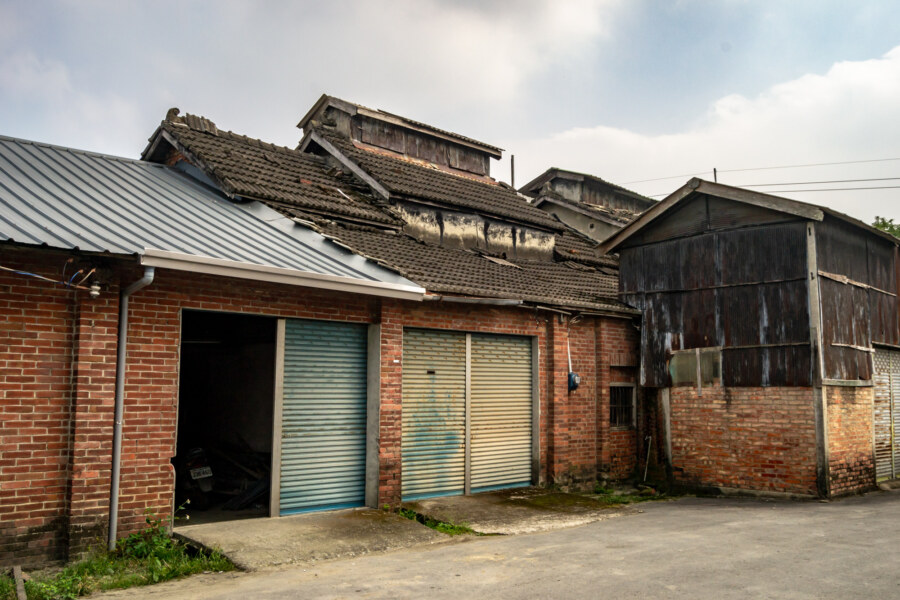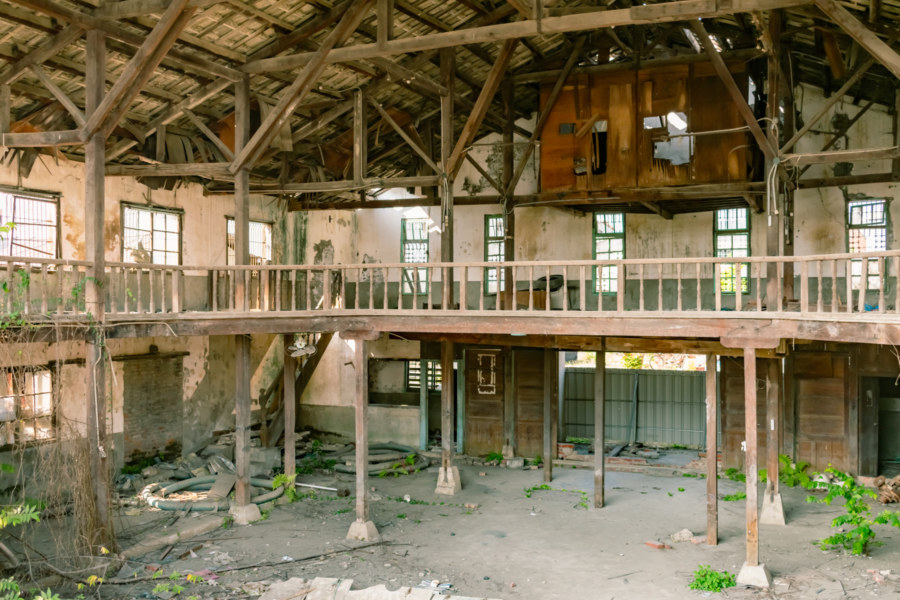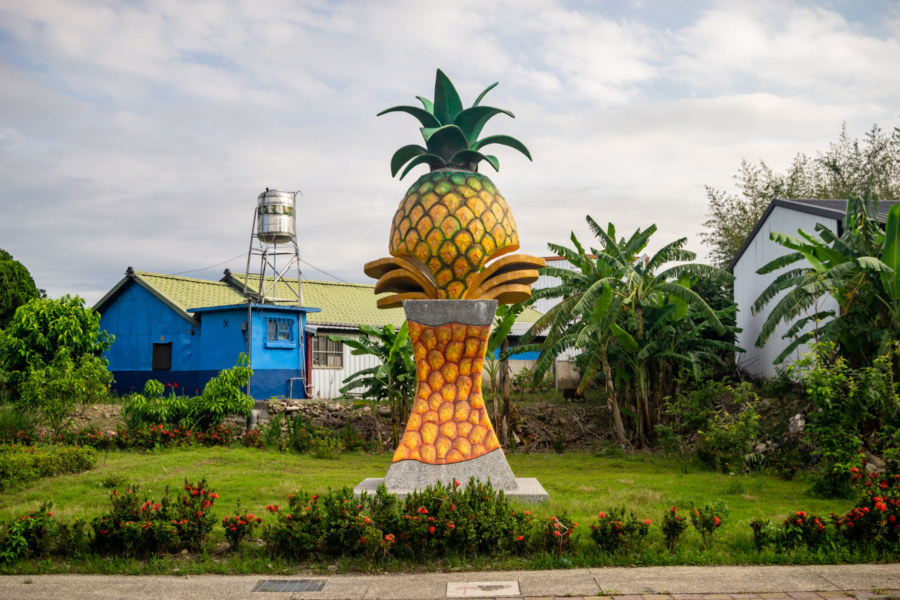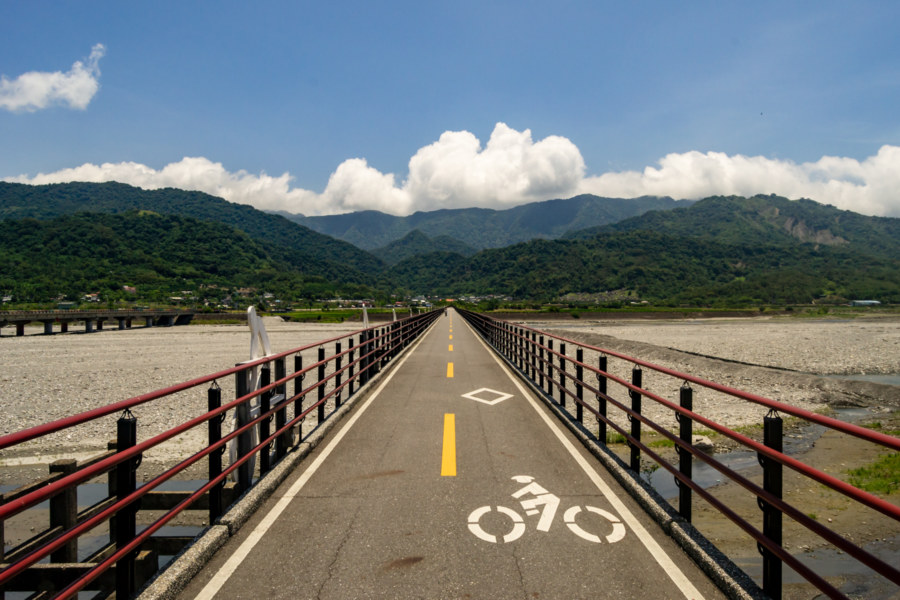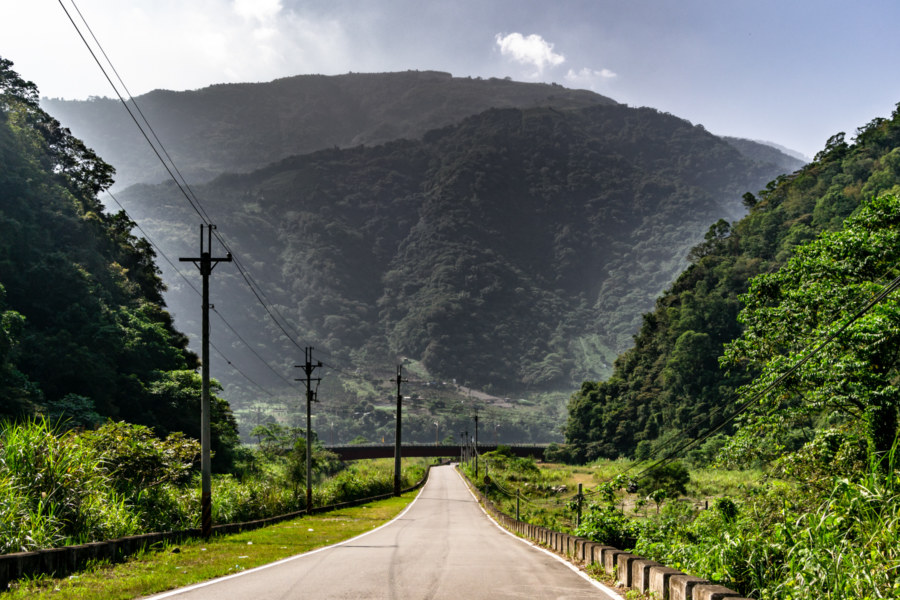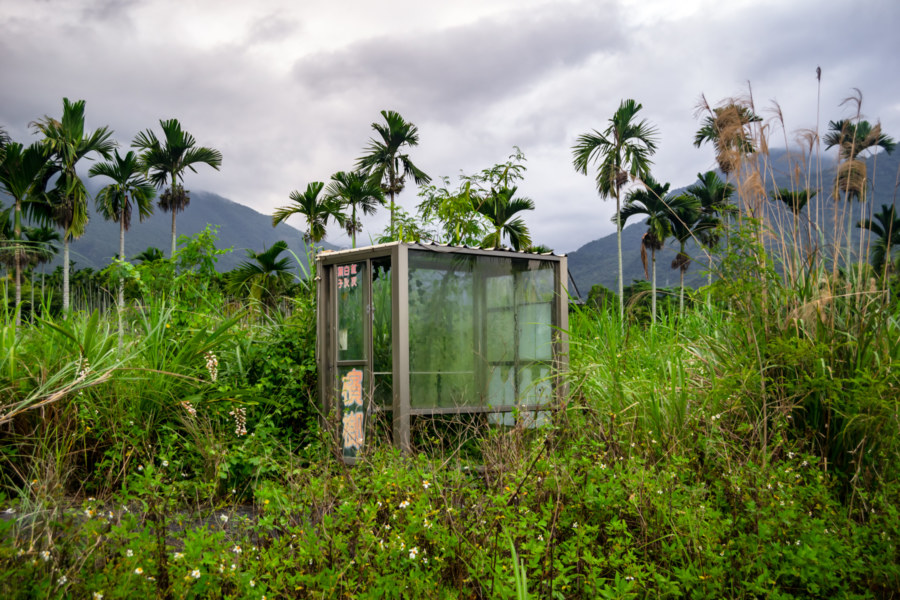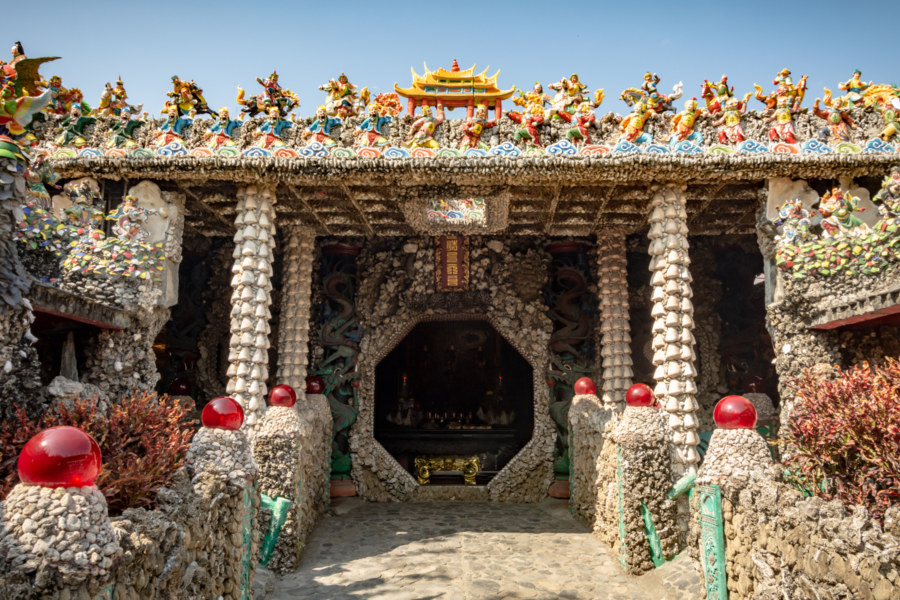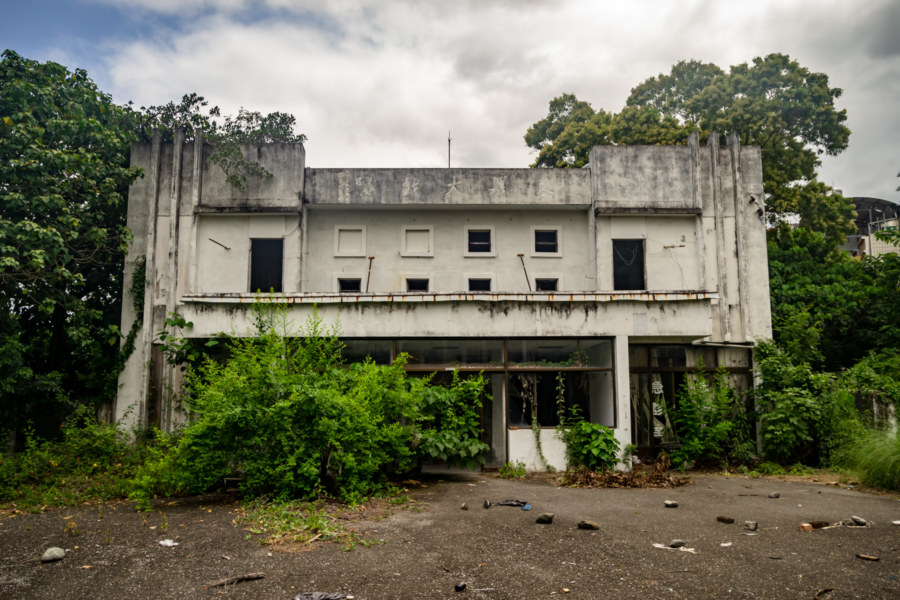Huázhōu Theater (華洲戲院) is a long-abandoned cinema located in Nanxi, a rural district nestled in the low hills of eastern Tainan, Taiwan. Easily reached via Provincial Highway 3, the main settlement in Nanxi is situated along the middle reaches of Tsengwen River, the fourth longest in the country. Nanxi, like most other parts of rural Taiwan, has suffered an almost continuous population outflow for decades, with household registration numbers almost halving from around 14,000 in 1981 to merely 8,000 in 2023. With so many people departing in search of opportunity in bigger cities we are left to wonder, what inspired the construction of such a large theater in this downtrodden town?
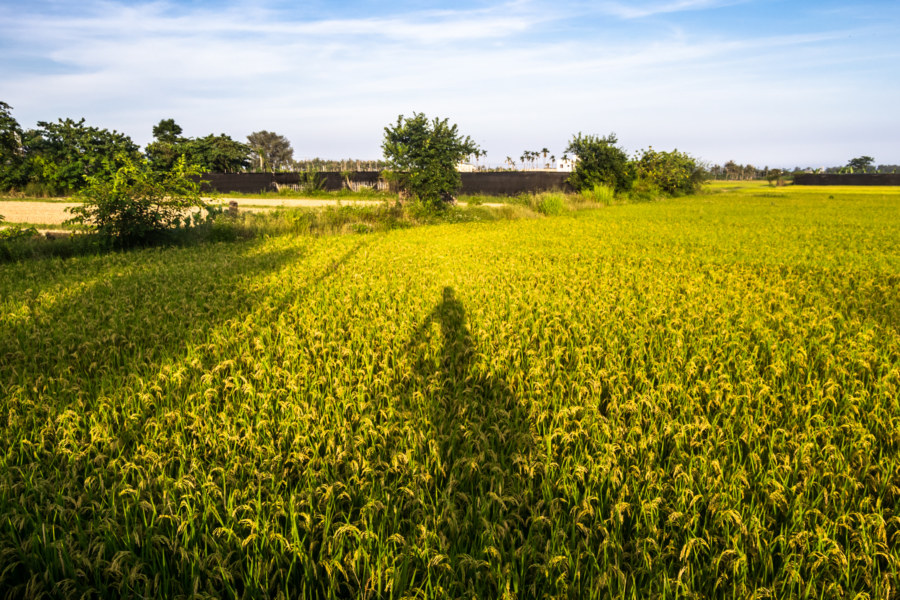
Dispatches from the countryside, beyond the dense urban cores, amidst the long fields and low buildings. See also: agricultural, landscapes, and mountains.
Adjacent Terms
Toubiankeng Police Station 頭汴坑警察官吏派出所
Tóubiànkēng Police Station (頭汴坑警察官吏派出所) is a remarkably well-preserved Japanese colonial era building situated in a small settlement in the foothills of eastern Taichung, Taiwan. Originally established in 1914, the station was reconstructed to standard specifications with reinforced concrete, red brick, and local cypress, likely in the early 1930s. Not only was it a police station, but it also served as a dormitory for the officers stationed here, agents of a colonial authority keen to extend control into the rugged mountains to the east. After the ROC assumed control of Taiwan operations continued much as before, and was only decommissioned in 1981 when a new police station was built immediately out front.
Postcards From Linnei 林內明信片
Linnei is a small rural township located on the south side of the Zhuoshui River in northeastern Yunlin, Taiwan. Despite its strategic position on the Western Trunk Line this township remains mostly pastoral and undeveloped, with little industrial activity compared to neighboring Douliu, the administrative seat of the county. Population in the township peaked at nearly 23,000 in the 1970s and has been declining ever since, recently falling below 18,000 as rural flight continues apace. Nowadays the local economy mostly revolves around agricultural products such as rice, bamboo, and tea, but Linnei was once a major center of tobacco cultivation, traces of which can be found scattered across the countryside.
Ruimao Theater 瑞茂戲院
Ruìmào Theater (瑞茂戲院) is an old wooden theater hidden in the winding laneways of Guògōu (過溝), a small fishing and farming village in remote coastal Chiayi, Taiwan. Nobody seems to know exactly when this theater was established, although there is general agreement it likely dates back to the early post-war era. Remarkably, it was one of two theaters in this settlement, and one of maybe a dozen along this stretch of coast in the 1970s, when salt production and oyster farming buoyed the local economy. As with most other theaters of its vintage, this one closed sometime in the 1980s.
Huadong Valley Ride 2018: Guanshan to Taitung City
My fifth day of riding the Huadong Valley in 2018 began in Guanshan and ended in Taitung City, approximately 45 kilometers further south. Although there were several uphill segments this was one of the least demanding rides of the entire trip, partly because I had a good night’s rest, but also due to some cloud cover moderating the influence of the tropical sun. After rising I cycled over to Little Star Breakfast shop (小星星早餐店) to try their fluffy handmade dànbǐng 蛋餅 (a crepe-like egg roll with various fillings). Feeling recharged, I set out to catalog more of eastern Taiwan’s historical relics and natural wonders.
Huadong Valley Ride 2018: Yuli to Guanshan
Day four of riding through the Huadong Valley of eastern Taiwan in 2018 began in Yuli, the midpoint of this bicycle trip from Hualien City to Taitung City. From the weather report I knew I’d have another challenging ride ahead—yet again the mercury was due to exceed 35 degrees. Luckily I was in no great rush, as I had allocated an entire week for a trip that experienced riders could easily manage in two days. I made good use of that extra time, making numerous stops and detours to document some of the many historic and cultural sites along the way, many of them quite obscure. I ended the day in Guanshan, slightly more than 40 kilometers down the valley.
Nantou Road Trip 2015: Sun Moon Lake to Taichung
This post is the final entry in a series documenting several days of riding around Nantou in October 2015. On the last morning of this trip I woke in Puli, close to the geographic center of Taiwan. I only had to return the scooter to the rental shop in Taichung sometime after nightfall so I decided to take a more circuitous route and check out many sights along the way. After a quick breakfast I headed south, briefly stopping by the shores of the majestic Sun Moon Lake (日月潭, covered in the previous entry in this series), and ascended a winding mountain access road leading into Xinyi, one of several majority Taiwanese Indigenous districts in this landlocked county.
Huadong Valley Ride 2018: Hualien City to Fenglin
My second day of riding Huādōng Valley (花東縱谷) in 2018 was not everything I hoped it would be. I didn’t manage a proper night’s rest due to a malfunctioning air condition and woke up feeling weak and dehydrated. With temperatures hitting 35°C on the road, and with fewer convenience store stops along the way, it turned out to be the most difficult day of riding on this particular trip back in May 2018. I originally planned to detour into the mountains to visit the village of Tóngmén (銅門) and cruise around Carp Lake (鯉魚潭) on my way south. Instead I elected to head straight down Provincial Highway 9 through Ji’an and Shoufeng into Fenglin to make up for lost time. Although I didn’t see nearly as much as planned I am glad to have an excuse to return to this part of Taiwan.
Sanqing Sanyuan Temple 三清三元宮
Sānqīng Sānyuán Temple 三清三元宮 is an unusual attraction in Fuxing, immediately to the south of Lukang in Changhua, Taiwan. It was constructed over the course of nearly two decades by Huang Chi-Chun 黃奇春, a former soldier who moved here in the late 1970s. This otherwise modest structure is adorned with thousands of seashells, pieces of coral, and other oceanic oddments—which is why it is more commonly known as the Changhua Shell Temple 彰化貝殼廟.
Dongxing Theater 東興大戲院
Dōngxìng Theater (東興大戲院) is located in a small village in the outskirts of Taitung City, Taitung, at the southernmost extent of the Huadong Valley (花東縱谷). Not much is known about its history beyond whatever can be deduced by visiting the site, but it was almost certainly built in the late 1960s, around the same time as Jinxing Theater, located just down the street, and Zhonghua Theater in Guanshan, which has almost the same design. At some point it went out of business, probably in the 1980s, and was converted into a small rural hospital, a repurposing I’ve seen nowhere else in Taiwan.
